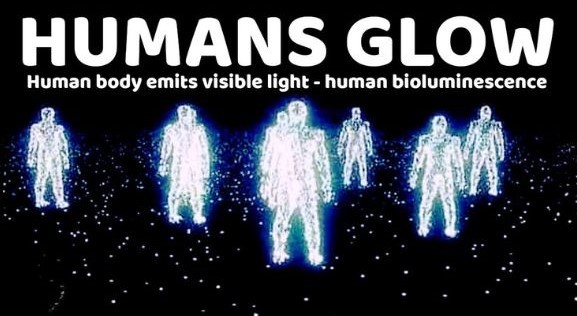In a groundbreaking finding that merges centuries-old mystical concepts with contemporary scientific analysis, researchers at the University of Calgary in Canada have verified that human bodies emit a faint, invisible biological light. Utilizing highly sensitive imaging technologies, scientists observed this “ultra-weak photon emission,” noting it fluctuates with emotional and physical states and vanishes entirely when a person dies. This discovery could provide valuable insights in the fields of medicine, biology, and metaphysics.
Throughout history, various spiritual traditions have asserted that the human body emits an energy field, commonly referred to as an “aura.” This new research provides scientific validation of these longstanding beliefs. Using specialized cameras capable of detecting these minute emissions, scientists confirmed that the body radiates this bioluminescent glow invisibly through the skin. Notably, the intensity of this subtle glow varies with the individual’s emotional and physical conditions, completely ceasing upon death.
Scientifically, this ultra-weak photon emission arises primarily from the body’s metabolic activities, specifically involving reactive oxygen molecules. These molecules interact within cells, generating photons as a byproduct of oxidative biochemical reactions. Researchers observed that when the body is stressed—whether emotionally, psychologically, or physically—oxidative stress levels increase, intensifying photon emissions. Hence, the body’s level of distress directly correlates with the brightness of this invisible illumination.
Given these insights, researchers believe this discovery could hold significant potential for advanced diagnostic applications. By monitoring variations in photon emissions, medical professionals may be able to detect underlying diseases, inflammation, or psychological disturbances earlier than possible with current diagnostic methods. Such non-invasive observations could offer clinicians a valuable tool for preventive care and proactive interventions.
Additionally, the study provides new scientific support to spiritual and metaphysical accounts across various cultures. Researchers speculate that historically documented saints, mystics, or enlightened individuals could have possessed heightened sensitivity, thus perceiving or sensing the subtle fluctuations of this human bioluminescent energy. This could explain cultural imagery of halos, mystical auras, and luminous fields closely associated with spiritually elevated persons.
Though mysteries concerning human consciousness and its subtle energies remain vast and largely unexplored, this groundbreaking research has opened promising interdisciplinary paths. The study not only establishes this biological luminescence as a viable biomarker for health but also indicates a potential scientific basis behind age-old concepts of human aura and spiritual presence, enriching our understanding of the human experience in both medical and metaphysical dimensions.










